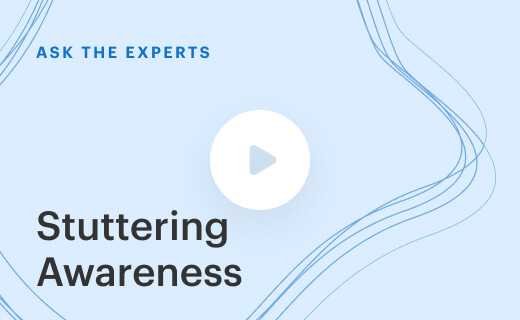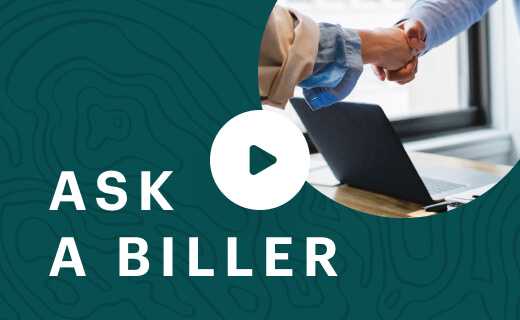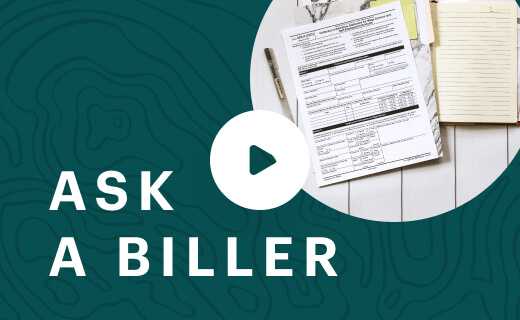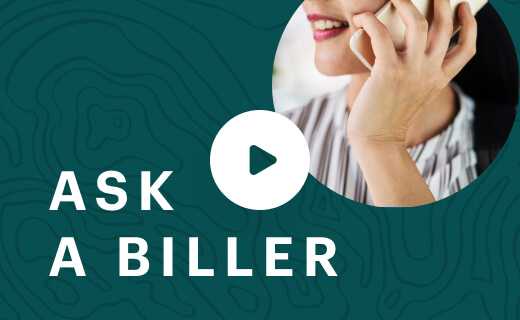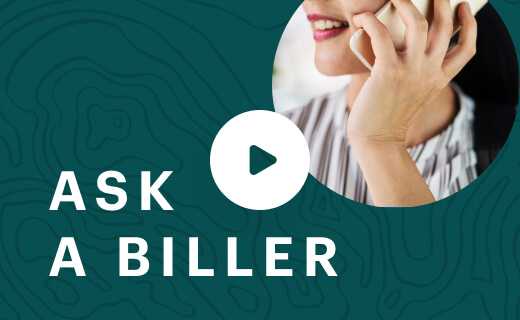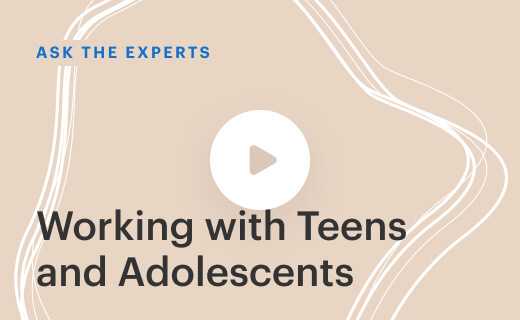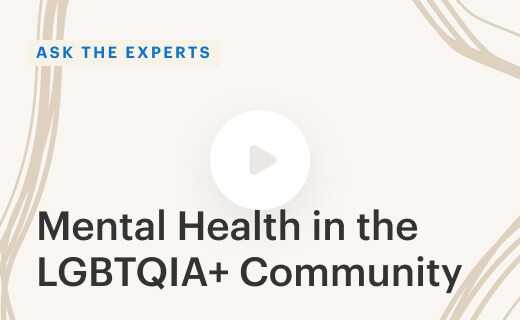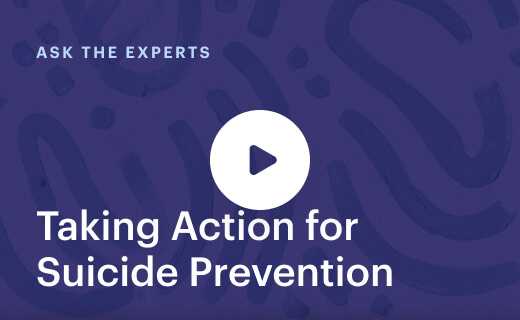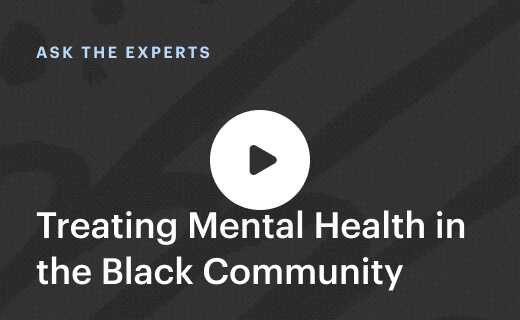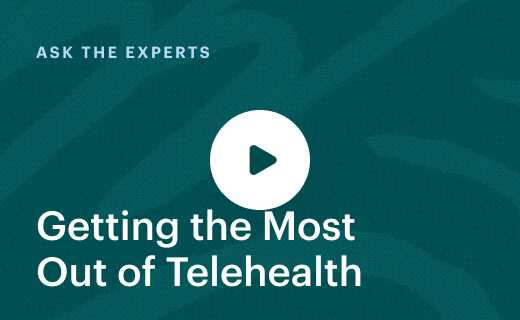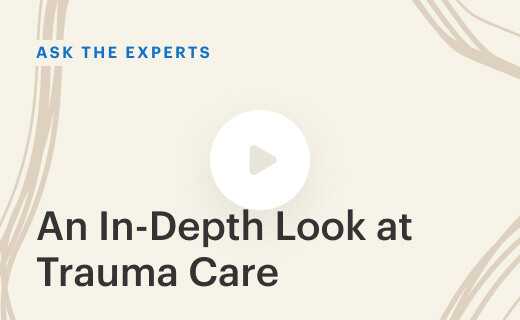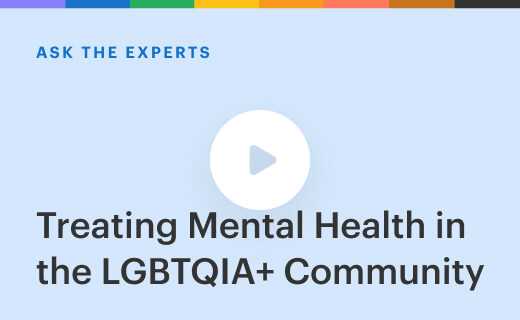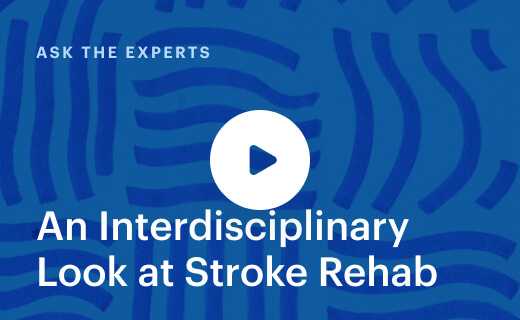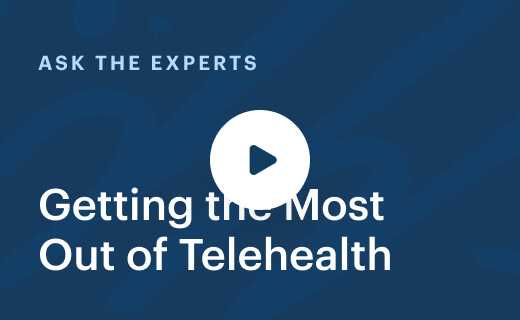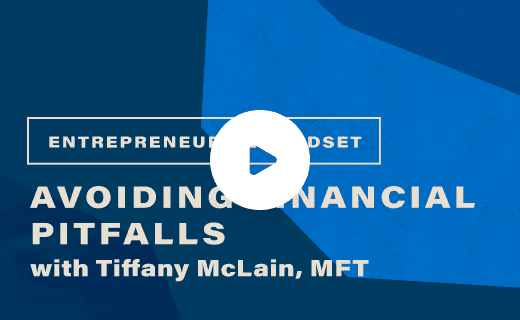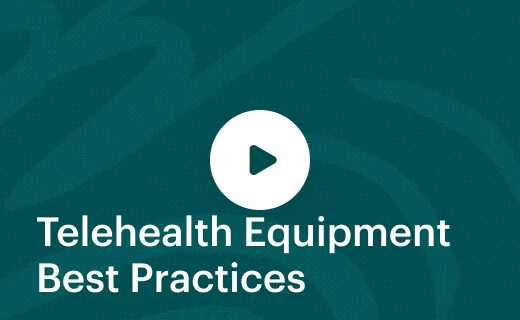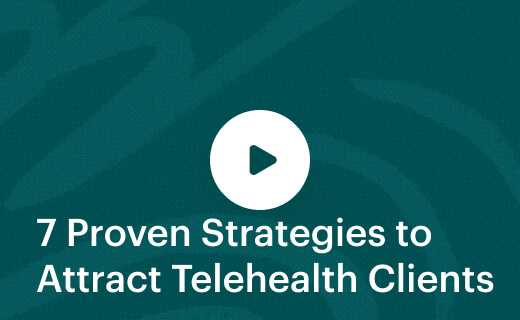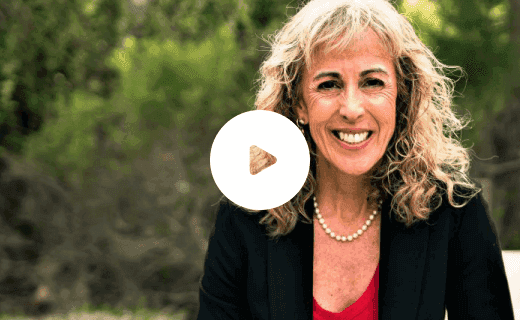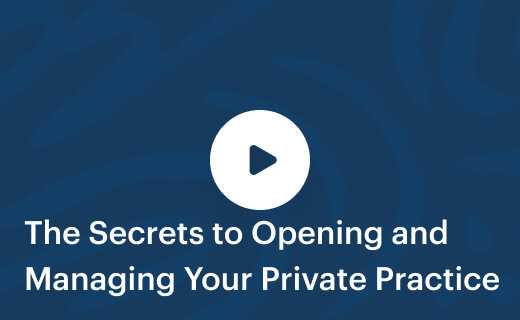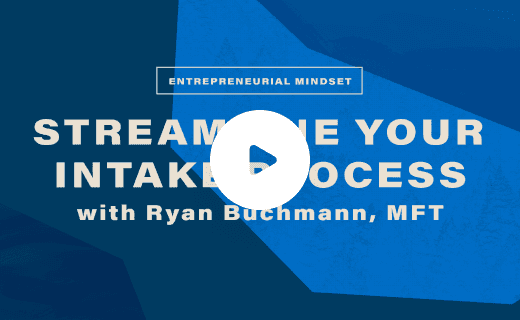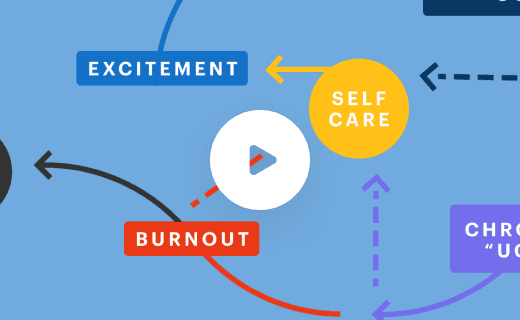Treating Mental Health in the Veteran Community
Free 30-day trial, access all this & more:
Want to know about other great webinars?
Join Janet Tuohy, MSW, LCSW-S, Dr. Danielle Wischkena, LCP, and Peggy Steinbrunner, PsyD as they discuss ways to offer therapy for veterans.
Facilitated by Dr. Ben Caldwell, this group of experts answers questions on different treatment models for military veterans, how to offer care when there may be resistance from clients, and best practices for veterans who are dealing with PTSD. They also give advice on how to work with military spouses and some of the common problems they face with their partners in service.
If you’re interested in offering mental health care to military veterans, this group has the resources and insight to help you get started.
- Introductions
- As mental health experts and veteran service members, what do you feel is the biggest barrier in veterans seeking services?
- What’s the best way to help veteran clients with PTSD through telehealth?
- What are some important things that this population wishes others would understand about working with them?
- What is the best way to support spouses of veterans or service members?
- How do you gain trust and credibility from military members if we ourselves have never served?
- What are your thoughts on using EMDR therapy with veterans versus prolonged exposure?
- How can we build a working relationship with the veteran community?
- What should we make sure to include in the conversation that we have not included so far today?
Ben Caldwell: Good afternoon and welcome everyone to today’s Ask the Experts Webinar on treating mental health in the veteran community. I’m Ben Caldwell. I’m the education director here for SimplePractice Learning. We’re really looking forward to benefiting from the expertise of our guests here today. We’ll do introductions first, starting with Dr. Peggy Steinbrunner.
Peggy Steinbrunner: Hi, I’m Peggy Steinbrunner. I’m a psychologist. I was active duty army for four and a half years, also as a psychologist. And I’m currently in the Army National Guard serving as a psychologist and behavioral health officer. And I have a private practice and I emphasize and focus on public safety, populations, military veteran, and substance use disorder.
Danielle Wischenka: Hi, my name is Dr. Danielle Wischenka. I’m currently a psychologist in private practice. My private practice, Better Health Therapy focuses on anxiety, stress, and health and wellness. The intersectionality with veterans of course is a lot of chronic medical conditions. I’m really excited to be here and honored to be asked to be here and happy Veterans Day everyone.
Janet Tuohy: My name is Janet Tuohy. I’m a clinical social worker in private practice, Zen Hart Counseling & Consulting. I was in the Army Reserves and I like to joke around with my young cadets or military members that it was over 35 years ago. And then I was also a civilian counselor for both Navy and Air Force. My husband is a retired Navy vet, my ex-husband is a retired Air Force vet, so I’ve been able to enjoy three branches and know both sides of the fence in there.
Ben Caldwell: Wonderful. Thank you, Janet. We’re really, really grateful to each of you for taking time out of your Veterans Day to come talk with us about this really important topic. In terms of the agenda for today, we’re going to start with the introductions that we’ve just been doing here, but also then we’ll get into questions that we’ve gotten over the past few days from counselors and therapists all over the country. Folks who are interested in working with veteran populations and have I think some really interesting and worthwhile questions about how to do it most effectively. We’ll have time for some final thoughts at the end. But please let’s make this a conversation as we go. I know that each of you has a tremendous amount of expertise to bring, so there’s a lot of good stuff for us to get today.
We will start with a question from Shannon who asks, “As mental health experts and veteran service members, what do you feel is the biggest barrier in veterans seeking services?” And Dr. Steinbrunner, we’ll start with you.
2. As mental health experts and veteran service members, what do you feel is the biggest barrier in veterans seeking services?
Peggy Steinbrunner: Okay. Thank you. I would say the two categories that come to mind are stigma, the barriers that service members face and also veterans in coming over the hill in terms of opening up to behavioral health services. We’ve come a long way in terms of reducing stigma for behavioral health concerns, but we still have a long way to go. It’s a work in progress for sure. The other thing I think is the soldier or service member mentality of just drive on, push on. They have a service mentality. They don’t take the time out to work on themselves. And then also on the logistical side, coverage for services, whether it’s trying to get a referral out from the VA or get VA appointments at a frequency where they can build a strong therapeutic alliance and accessing other forms of coverage through insurance, TRICARE and those types of things.
Ben Caldwell: Yeah. That service mentality, I think, is something that we will be revisiting as we go probably a few times today. Janet, what do you think? What’s the biggest barrier in veterans seeking services?
Janet Tuohy: I totally concur with everything that Peggy just said. She covered the basis on that. Important to note though, it’s not just mental health, it’s medical as well. So it’s taking any time out to do anything for themselves is sometimes a hard barrier to pass. Also privacy, fear that the command might come asking for information that they want to keep private. That is also an issue as well.
Ben Caldwell: Yeah. Makes a lot of sense. Dr. Wischenka.
Danielle Wischenka: Concur with everything that’s been said so far. I would also add the way that I think about it is the social or traditional military barriers, as well as the barriers we see for all individuals trying to access mental health care, including will the clinician understand? Will they have gone through the experience of treating someone like me and then some? Veterans come in all sorts of shapes and sizes, sexual orientations, gender identities, socio-cultural ethnicity, so there’s a lot to be said about trying to get through all of those barriers.
Ben Caldwell: No, that makes a lot of sense. Well, we’ve got some other great questions here. Let me go to the next one. There are a couple of things here in what you said so far that I know we’re going to come back to. Nannette asks, “What’s the best way to help veteran clients with PTSD through telehealth?” We know that PTSD is of course a major concern within the veteran population. And treating PTSD through telehealth seems to be adding this layer of at least potential complexity in that form of treatment. So for each of you, how have you made this adjustment? What do you find most effective? Peggy, I’ll start with you.
3. What’s the best way to help veteran clients with PTSD through telehealth?
Peggy Steinbrunner: So I think accessibility and flexibility are very important, maybe especially important with this population. As with any patient coming in for behavioral health services, it takes them a lot of courage to build up to getting there. And once they do we need to make it happen on our end, whether it’s switching to phone if they feel uncomfortable in the video, bringing family members in, flexibility with scheduling to get them in around their work schedule or their duty schedule. I think all of that’s extremely important. And then of course getting very fluent with our risk assessment over telehealth to keep everyone safe.
Ben Caldwell: Do you find that it makes it harder for people to recount the details of their trauma when you’re working via telehealth, as opposed to being physically in the room with them?
Peggy Steinbrunner: I actually have not. I could say this across the board, but in my experience, I almost think it gives them an added layer of feeling comfortable because they’re in their own space, there is the screen in between the clinician and the patient. I think it gives them a sense of safety that actually opens them up more in the therapeutic process.
Ben Caldwell: Yeah. That makes sense. Janet, what about you, what’s your experience been here?
Janet Tuohy: So I agree with what Peggy said, as far as finding that this is a great avenue telehealth for a lot of veterans, them being in their own home, that extra layer. I even found that one veteran who can’t use your portal to say something late at night, the message portal, he actually started confess and talk in ways that he had never told any… he actually said any other living soul. So I think that layer did help. I do have a few though that do not feel safe in any type of digital format. So there are a couple I do see in my office. And that has to do with a lot of mission sensitivity that they don’t feel safe in any other mediums but in person. So I’m glad to be able to have both.
Ben Caldwell: Yeah. That makes sense. It’ll be interesting to see how our practices shift and adapt as some of the emergency orders around COVID are lifted. There’s been some research suggesting that a lot of the transition to telehealth that we’ve had to make very quickly in the past few months is going to be permanent. I saw a study a couple of days ago talking about psychologists and saying that prior to the coronavirus pandemic, about 7% of services were being offered online. Since the pandemic hit something like 90 to 95% of services have been offered online. And in this survey, they asked psychologists how much of your services will be provided via telehealth after the pandemic ends. And people are estimating like 30 to 40%. So really, really interesting to see how much of that shift I think is going to remain even after the pandemic is over. Our next question comes from Susannah, “What are some important things that this population wishes others would understand about working with them?” And Danielle, I’ll start with you here and then we’ll go to Janet and then Peggy.
4. What are some important things that this population wishes others would understand about working with them?
Danielle Wischenka: Sure. Thank you, Ben. So in the work that I’ve done, I think one of the conclusions I’ve drawn to answer this question is that veterans wish people would know that not everyone is active military, not everyone is male, not everyone identifies as a veteran, which could be a whole other separate conversation, and not everyone has PTSD. I think it also shows up a lot in my work because I specifically work on behavioral medicine related things. So how we navigate behavioral changes that help influence chronic pain, for example, weight loss, et cetera. So not everyone necessarily has PTSD. And I think specifically veterans that come through with those presentations, they want people to know that.
Janet Tuohy: To go on piggybacking what Danielle said. I would agree with the, not everybody has PTSD and there’s a difference between PTS and PTSD. And I think that’s important for people to recognize that they still have to stay mission ready, and how to balance their needs with mission readiness is going to be important. It’s also important to understand that, particularly with women, that you want to say words like, are you a veteran? You don’t want to just simply say that. You want to ask, have you served? Often women will not identify themselves as veterans. And it’s important to know that their mission is about service and how to do that. Especially if they’re in leadership. Sometimes leadership is the hardest to help because they want to help everybody else before themselves, and that’s very hard ingrained. And teaching them that it’s okay to also take care of yourself.
Ben Caldwell: That’s interesting. I wouldn’t have known of that distinction. I wouldn’t have known to ask that differently before. Is that the kind of thing that you would suggest putting into an intake document? Is it the kind of thing that you think is better addressed in conversation?
Janet Tuohy: I think both. I think if you say, have you ever served in the military is much better than are you a veteran?
Ben Caldwell: Interesting. Thank you. Peggy, what about you? What would you add here about what the veteran population wishes other clinicians would understand about working with them?
Peggy Steinbrunner: I think any kind of exposure that clinicians can get to basic military culture is helpful, and there are some free resources through the Center for Deployment Psychology and other resources where you can take a course in just basic military culture. And I think very importantly, if you don’t know, don’t assume and ask the question. Many military service members and veterans are happy to explain and talk about their MLS or the acronyms that don’t make sense. But it’s important not to make assumptions. And the fact that we have an all volunteer force does not mean that they’re always doing jobs voluntarily or that they selected their particular military occupation. And any exposure that the clinician can get to the daily struggles of military life over what’s televised and emphasized in the media in terms of combat trauma. There’s people that have not been in combat, but just the day-to-day stressors of military life can become overwhelming and require some attention and working through.
Ben Caldwell: Those are really great points. And to that end, if you don’t mind, I want to throw in a follow up here. So my dad served in the Navy and I’ve never served in the military, but I’ve learned some things about what in my mind are military culture from him. And I’m curious, and you all have experience with members of multiple branches of the military. And I know this could be its own hour long conversation, but what do you see as some differences in culture between the different branches of the Armed Forces? Because it’s not necessarily monolithic, there are some consistencies, but there are also some differences. And Peggy, I’ll start with you here.
Peggy Steinbrunner: Yeah, absolutely. They really are their own little mini cultures in each branch, and even sometimes by the military occupation, there’s a different culture and vastly different experiences. I think asking questions, know what you can know and then ask the questions when you don’t know.
Ben Caldwell: Danielle, do you want to add anything to that?
Danielle Wischenka: I think Peggy pretty much said it. I think something else that comes to my mind is in terms of the generation effect. So what is the age of the veteran? I think that also adds another element to it. Because we’re not just thinking about the branches and maybe the occupation, but also what were they doing at the time, especially if they’re retired veterans. So that’s, I think important to consider too.
Ben Caldwell: Yeah. Military culture is an evolving thing. It’s not necessarily the same. If you look at folks who served a generation or two ago, versus people who are in service now. Roles matter there a lot as well. Janet, did you want to add anything on this?
Janet Tuohy: Sure. So as you know, I’ve got experience with three of the five major branches. I want to make sure we do a shout out to the Coast Guard because they often get forgotten. And we just had the Marines birthday, so just adding all that in there. My personal experience is that it’s important to understand how they got formed and what their mission focus was. Whereas I feel like the army is probably the most broad spectrum of all the forces because they have even people who are in medical or cooking. Their mission is to be prepared as an infantry person to a certain because they might be engaging. Air Force because they don’t necessarily are up front, I would say in some ways they’re most civilian like in the way they approach their organization.
And I would say with the Navy, to me that felt very different than the other two, because even my husband remembers a time when women were not allowed on ships. And so the other two branches have had women for many, many years, decades before the Navy. And so they were much more accommodated and have a different culture around women. And I remember once being very surprised, I don’t know, maybe about a decade ago, hearing from a woman who was in the Navy having some negative viewpoints about women on ships. And I think that may be because of the discomfort of still learning to accommodate women on ships and the personalities and so forth.
Ben Caldwell: That’s interesting. Thank you so much. Our next question comes from Adele. What is the best way to support spouses of veterans or service members? Actually, Janet, why don’t I start with you on this one, and then we’ll go to Danielle and then Peggy.
5. What is the best way to support spouses of veterans or service members?
Janet Tuohy: So as far as spouses, I would recommend very much that you understand what the resources are available to them. It’s like family readiness group, the ombudsman, what their different roles are for the families and how they can support them. It’s also important to know that it’s okay for them to be angry and upset that their spouse is gone and that they don’t always have to show a chipper face. That’s okay. And they need to understand that not everybody feels that way. It’s okay for them to take time out for themselves. It’s also really important to practice how to have the return and reunion peace. How to separate doing things on your own, but also making space for them when they come home and how you’re going to do that as a routine, because that can be very traumatizing. And also if there is PTSD, teaching them about secondary PTSD and vicarious trauma is important as well.
Ben Caldwell: Yeah. When a spouse or partner leaves, it’s its own trauma, but when they come back, it can be traumatic as well. Not necessarily because it’s a negative, but just because it’s such a major transition. Danielle, what about you? What would you add here?
Danielle Wischenka: Yeah, absolutely. So knowing that what the community and VA support systems are, whether it be groups, individual counseling, I think this is where we have to be a little bit savvy and do some of that legwork. I know va.gov has a variety of different resources. We just have to dig through with clinicians, especially if we don’t have it as readily available in our Rolodex in our mind. In terms of the clinical piece, I think something that applies again to my work with more of chronic medical conditions would be to make sure that the veteran is wanting their spouse to be a support system. Sometimes veterans actually don’t want their spouses involved in treatment. In terms of supporting spouses with the reunion piece, I think it’s pretty much what has been said before; normalizing the stressors, understanding what the reunion and then that separation, what that dynamic does to the family if there are any kids involved, et cetera. So it’s really stretching our mental health brain and really figuring out what’s going to be most effective for them.
Ben Caldwell: Yeah. You said something in there that really struck me about veterans not wanting to even necessarily burden their families. There’s this service mentality that suggests that you don’t want to be a burden or a detriment to your unit. You also don’t want to be a burden or a detriment to your family. And so it’s not terribly unusual it sounds like for a veteran to not want to involve their family in treatment, even when that kind of involvement we as clinicians might think, oh, well, of course you want to do this. Of course it’s going to be helpful. Wouldn’t necessarily be welcomed. Peggy, what would you add here?
Peggy Steinbrunner: I think it’s important to acknowledge that spouses serve too, not in the same way as the service member, but they’re at home, they’re taking care of the kids, they’re making things happen when the service member is away or working long hours and thank them for their service. And that can be engaging. And then to encourage, demonstrate, and help them to practice self-compassion and compassion for the service member, and help to educate them in whatever holes there might be in terms of the PTSD diagnosis that they have or any education or information that you can share regarding military culture that maybe they are or are not familiar with.
Ben Caldwell: In regards to that compassion for themselves and compassion for the service member piece, I would imagine a lot of spouses really wrestle with… kind of like Janet was saying, this dilemma between, I want to sacrifice. I understand what I signed up for. I know that this is part of being a military spouse and also does that mean I have to be happy about it? And does that mean that I have to offer my partner compassion when I don’t necessarily feel compassionate? How do you work with spouses on that particular dilemma?
Peggy Steinbrunner: For compassion?
Ben Caldwell: Yeah.
Peggy Steinbrunner: So I would say that demonstrating that in a therapeutic relationship, therapeutic exchange starts to break the ice and show them that that’s an option. Also trying to get them to see areas where it might be a little bit more easy to demonstrate compassion. To externalize it a little bit, I might say, how would you respond to your child if they were feeling that way? Or even their pet, sometimes, or a parent, just to get them to externalize. Because sometimes it’s easier to show compassion to people that are not ourselves and people that are not our spouses.
Ben Caldwell: Absolutely.
Janet Tuohy: Ben, could I address this before you go on with the statement?
Ben Caldwell: Yeah, please.
Janet Tuohy: So I often also get women who… or spouses, not just women, that will say, “I didn’t sign up for this. I’m married the person, I didn’t want to marry the service.” And so a couple of things I do, one is that I get personal and I say, “Look, I’m going to tell you something personal. And that is, there were some really hard times for me and my spouse, but it made us a stronger couple.” And so I get them looking forward. And I also talk to them about their own goals and creating a life for themselves so that they also feel like they have a piece. And nice thing that I didn’t even have is the availability of all these internet businesses. So they can take a business with them from place to place and resources like the V-WISE or EBV, where they can go and get some training to have their own entrepreneurship or some other type of goal for themselves.
Ben Caldwell: And just for folks who are unfamiliar V-WISE and EBV are?
Janet Tuohy: V-WISE is Veteran Women Igniting the Spirit of Entrepreneurship and EBV is Entrepreneurship Bootcamp for Veterans. They’re both through Syracuse University who’ve done an amazing job at giving free training for their applicants, the veterans and their families.
Ben Caldwell: Excellent. Thank you. Our next question comes from Patrick, how to gain trust and credibility from military members if we ourselves have never served. There can be this sense of, well, if you haven’t been in the service yourself, then you don’t really know. How do you work on that? How do you let a veteran know that, yes, of course I’m not going to pretend to have lived this experience that I haven’t lived, but that I can still empathize with these important elements of your experience? Danielle, I’ll start with you here.
6. How do you gain trust and credibility from military members if we ourselves have never served?
Danielle Wischenka: Thanks, Ben. I would say that one of the approaches I use is the humility. You’re right, I’ve actually never served. And I use an analogy with one of the types of clients I work with is teens also. And I let them know, I may have not gone through every single mental health condition, but I have a sense after working with a lot of clients, that these are some of the tools that work. And so my personal approach is that humility based approach. And I think that’s pretty helpful. Another piece I would add is that I don’t try to fake it and know all the lingo. I do read up and try to educate myself. And when there’s a barrier or a veteran brings up something, I ask them if you mind explaining what that means or I’m not so sure I’m following what you’re saying? In terms of the service, could you explain a little bit more? And I let them say nope or yes.
Ben Caldwell: Yeah. It seems like there’s something impactful about letting people correct you. It’s not a perfect parallel, so don’t take it as such. But when I was early in my career and I was working with parents of kids and I didn’t have kids, I would say, “Just, if I’m missing something by virtue of not being a parent, it’s okay to tell me. I know that I’m not a parent. You’re not going to insult me by saying so.” And that seemed to be helpful. Peggy, what’s your experience here? How do you suggest that people gain trust and credibility from military members if the clinician hasn’t served themselves?
Peggy Steinbrunner: I think you guys hit the most important point in terms of humility, asking the questions, being corrected. And I will just add that it’s a continuum. It’s not like a yes or no, we’re the same. I’ve almost been in 10 years, but I have never deployed. I’m not on the same space with someone who was deployed. Some people serve their 20 or 30 years in the National Guard versus active duty, and there’s a little bit of a distinction there. So I would just encourage folks not to be deterred by that, not to be deterred from working with veterans. Some people, some veterans service members almost prefer to work with a civilian that’s not going to make assumptions as they might think, or have those kinds of connections with military in service.
Ben Caldwell: I was going to ask about that specifically, so I’m glad you mentioned that. There are service members and veterans who very intentionally seek out clinicians who are separate from any military aligned system. Not always, but often, sometimes who are the cash pay so there’s not an insurance record. I think I have a sense of this, but I’d rather hear it from you. Why do some veterans and some service members take that approach? Why do they want to seek services from somebody who is as far a field as possible from the military world? And Peggy, I’ll start with you and then Janet I’ll come to you.
Peggy Steinbrunner: So I think that there’s a gamut of reasons. Sometimes there, unfortunately some kind of either real or perceived injustice that they’ve experienced from a commander, a first sergeant from the US Government and they want to be as far away from that as possible, to feel safe and be able to open up. Sometimes it’s that they are afraid they’re going to get discharged or that their benefits will get impacted. And sometimes, they’re people too and they just have people issues and it’s not necessarily a military issue.
Ben Caldwell: Yeah. That makes sense. Janet, you want to add to that?
Janet Tuohy: Yes, I do. And I also want to add to the earlier one about the credibility as well. Why do they seek civilian is because of sometimes the privacy. They don’t want things going to their command because of the perceived moral injuries that they’ve had. Sometimes it’s a way of regaining themselves back in touch with their own humanity. Because part of what they have to do in the military is they have to become uniform. And so that’s often why they go by last names and they have to be the same. My intention is when they come into my offices, I call people by first name. It’s to give them back their identity.
And so going back to the gaining trust and credibility, something I want to add is that I like what Peggy said. In fact there will be a list of resources for everyone at the end to include the training. I even took some of those training just to do the CE, and I always learned something new or something that I forgotten. So it’s beneficial, I think, to anyone. So doing your homework, getting to know and maybe even volunteering with an organization. There’s so many out there that might give a lot of credibility to a given hour, which is also going to be on the resource. That’s where you do an hour a month and you do pro bono work with somebody who is in the service. So that just shows that you truly are invested in who they are and that they matter. That’s important.
It’s also important, this is one of those funky things you won’t see anywhere, but letting them drop their F-bombs and cuss and even dropping a few yourself if you’re comfortable with it, because it shows that you’re a human being. This is really shitty. I’m sorry. It just sucks. And being able to say that goes, oh, okay, you’re not stuffy and you’re a real person. In fact, I just had a client say that yesterday. He went through at least four prior to seeing me this year. And he said, you didn’t get upset when I started talking really rough. He used a little more explicit than that, but you get what I’m saying here.
Ben Caldwell: Yeah. And I get your point. Certainly. Thank you. Oh, sorry. Let’s go to this one. This is from Patrick. What are your thoughts on using EMDR therapy with veterans versus prolonged exposure? So this is a question about different models of treatment. What are each of your preferences here? How do you choose to work? And I’ll start with Peggy and then I’ll go to Janet.
7. What are your thoughts on using EMDR therapy with veterans versus prolonged exposure?
Peggy Steinbrunner: I am not trained in EMDR so I can speak to prolonged exposure. I think there are certain people that have a high level of avoidance and there’s a component with their presentation that makes the exposure aspect especially important. And it has great efficacy with some patients. There’s not a one size fits all I don’t think in any area of treatment, and especially not with military, with veterans and with PTSD. So if you do decide to do a manualized treatment, I think building rapport first is extremely important. Making sure they have the coping skills and a little coping toolbox to rely on if they happen to get overwhelmed and meeting them where they are. So telling them about the treatment and getting their buy-in. And I think that’s especially important for prolonged exposure because you’re going to do obviously a lot of work in the session, but you’re going to ask them to go out and do a lot of work on their own. That can be very hard, very difficult.
Ben Caldwell: Okay. And Janet, I understand that you can speak to EMDR.
Janet Tuohy: Yeah. I’ve been doing EMDR almost 23 years. So the VA and that is also going to be in the final resources, recommends three evidence-based therapies, EMDR, Eye Movement Desensitization and Reprocessing, nobody needs to know the words, but they are P which is the prolonged exposure and CPT, which is cognitive processing therapy. I’m familiar with two of the three. EMDR is truly a favorite of mine. It’s one of my favorite skillsets throughout, and I’ve seen people come through that in an amazing way. However, it still isn’t for everyone, like Peggy said. I think whatever you feel most comfortable in and are able to be adept in, you’re going to probably do the best. There are some other additional therapies and you got to be able to pivot when yours doesn’t work. I was doing EMDR for somebody who was traumatized, not military, but it wasn’t the right one. And I referred her onto somebody else who was using a different skillset and it worked great for her.
Ben Caldwell: Do you find that you can do EMDR as effectively via telehealth as you can in person? I’ve heard the full gamut of experiences here from EMDR practitioners. I’m curious what your experience has been like.
Janet Tuohy: I’ve been able to do both. And I will say there are a couple of people who I feel like they’re much more effective in doing in person, but there are some folks that do it just as effectively at home. And I think it depends on the level of trauma and if I’m working with somebody who’s dissociative, DID, dissociative identity disorder, I am a little bit more leery about doing first one via telehealth. I would much rather do that in person. So again, it depends on their level of coping and resources and supports.
Ben Caldwell: That makes sense. Let’s see, Danielle, I’ll start with you for this one. What model have you found to be most effective when working with veterans?
Danielle Wischenka: Yeah. So I think this question could be answered in several ways. So I think about it in terms of the fit factor and the clinical factor presentation. So what I mean about the fit factor is when you are first meeting a client or an individual, what are their personality structures? What do you think may work fast? Are they wanting coping skills or are they wanting kind of a general guidance? And I think that helps sometimes determine which treatment is most effective. So for instance, I’m always thinking, will they benefit from structure? And especially in the veteran population, are they may be overly controlled in terms of their emotional expression because of their military service or even thought rigidity in terms of how much they can handle? And so if it is something that they would benefit in terms of structure, so for example, part of my practice, I work with anxiety disorder, something like OCD. I think it still is helpful, even if there is some maybe thought rigidity to go ahead and do something that is more classical CBT.
In terms of what I alluded to about clinical presentation and going a little bit more in-depth into my personal experience, I’ve noticed that sometimes veterans, I mean, certainly they have TBI, they may have learning difficulties, and those things tend to impact the potency or the ability to do something a bit more structured or manualized. So that’s where I maybe pull into more interpersonal work. And I found that that is more helpful for veterans that maybe have some more pervasive challenges. I think it might’ve been Janet, you’ll correct me if I’m wrong, that mentioned kind of that institutional trauma that happens when we see veterans, maybe if we see them in the VA system or they come to private sector after not really getting a lot of help unfortunately from the VA or not feeling that they got help, or maybe more insight oriented work is helpful. So in a nutshell, and in summary, I think it depends on a lot of factors.
Ben Caldwell: Well, and my guess from what I’ve heard from all of you so far, is that it sounds like you would agree on that, that there’s the question of what’s the clinical level of need for the client and also what are you trained in? What are you comfortable with? And can you adapt if the thing that you start with doesn’t seem to be working? We’ve got a couple of additional questions here, I want to make sure we have time for. So I want to move us on to the next one from Debra. What is the best way to advertise your services to potential clients who are veterans? With any kind of clinical marketing, we think about how can we best reach the population that we’re trying to reach? Where can we make sure that they see our name, website, phone number, whatever, when they’re in their time of need. So how do you reach veterans who also do have this other whole system available to them? Janet, I’ll start with you and then Peggy, and then Danielle.
Janet Tuohy: Well, I’m going to say, particularly with this population is to get on their insurance plan. This is a population that will generally not pay out of pocket. Not saying they won’t be, and that’s why it’s the only insurance I take. Now interestingly enough, I’m a clinical social worker, so I’m automatically opted into Medicare unless I opt out. LPCs, that’s not the case, they can’t take Medicare. So they can get in network with TRICARE, but I can’t because I’ve opted out. Doesn’t mean that I can’t be a credentialed non-network provider. So basically they treat them little bit differently, but not too much. So that’s going to be the primary thing.
Ben Caldwell: Forgive the interruption. I’m confused. I just want to make sure I understand this correctly. So you’re saying, one of the best things you can do is get into the insurance plan, which would be TRICARE.
Janet Tuohy: That’s one of them.
Ben Caldwell: That’s one of them. Okay. So psychologists and social workers can bill Medicare, MFTs and counselors cannot. How do Medicare and TRICARE link up?
Janet Tuohy: So it’s interesting. They won’t allow you to be in network with TRICARE if you’ve opted out of Medicare.
Ben Caldwell: Oh, interesting.
Janet Tuohy: So what you can do though is become a credentialed network provider. And so you’re not quite in network. You’re about 5% off. A lot of times they seem to treat me as if I were in network. So there’s a few little bit of loops that I have to jump through, but not really, it’s pretty easy. So I recommend that tops.
Ben Caldwell: Okay. Peggy, what would you have to add here?
Peggy Steinbrunner: I think that maybe it’s different with different VAs, but the VA that’s local to me, providers can get credentialed to be a community provider, so for specialty care or overflow from the VA. It’s an insurance credentialing process, but you just want to contact your local VA and find out what the process is for that. And I think also in terms of marketing, making sure that your material regarding your clinic or your practice specifically reaches out to veterans and is appealing and welcoming to veterans, I think is important.
Ben Caldwell: How would you do that? I would assume that there’s probably more to it than featuring photos of veterans in your brochure and website. Is there particular language to use? Are there particular elements of your work to put forward to make clear that veterans are welcome in my practice that I enjoy working with veterans?
Peggy Steinbrunner: I think so. I’m not a marketing expert, but using the terms veterans, military service members, service members spouses, family members, I think on your website and your material is one element. I think using pictures is important too. The people tend to be drawn more to pictures and pictures say more than words alone. Also, whatever kind of experience you have. So I think that I do get a little bit of credibility automatically because I’m an active duty veteran and a current National Guard service member. But whatever experience you have, if you have experience working with spouses, or if you have family members that gives you a particular leg up in so to speak with that population. I think any kind of familiarity you can express and express repeatedly, so they don’t have to look any harder than they need to.
Ben Caldwell: Makes sense. Danielle, anything to add on here?
Danielle Wischenka: Yeah. Peggy and Janet gave some great insights. I think the only thing that I would add is about the actual copy that you put on the website. So I know we’ve been having a really lively discussion in terms of which types of therapies work best for veterans and such. And just having kind of that… again, coming from that humility standpoint, that real clinical and human perspective. I think Janet mentioned that too, being a real human and just acknowledging for instance, transitions, reunification. So maybe even having some… if you have a blog post, or if you don’t, that might be a great opportunity to start one on your website and just speak specifically to veterans and their spouses. I think that can go a long way.
Ben Caldwell: All excellent ideas. Thank you all. This is our last question then we’ll go into some sort of closing statements. Janele asks, “How can we build a working relationship with the veteran community?” So presumably this is bigger and broader than just what you do to market your services, but really how can we as clinicians individually as well as collectively work better in service of our service members, veterans and their spouses and families? I know there’s a lot of ground potentially to be covered here. Janet, why don’t I start with you?
8. How can we build a working relationship with the veteran community?
Janet Tuohy: So again, I say, if you can be involved with a military organization go out to… and as strange as this is, but I got a call right before this webinar. And my mother was talking about how she was at the veteran’s cemetery visiting my father and the whole field was plastered with flags and people coming were out. And so there’s all sorts of little things that you can do, when we put Christmas wreaths out during the holidays or whatever it might be that recognizes that connection. But obviously, if there’s an interest in veteran community, there’s got to be a reason for you personally. Maybe you knew somebody that was a brother, a neighbor, a sister, a best friend. And that’s where you want to connect, because it means something to you and let them know about that.
Ben Caldwell: Danielle, what would you add? How can we as clinicians individually and collectively build a working relationship with our veteran community and with their families?
Danielle Wischenka: Yeah, it’s a really big question. I think it could be answered in a variety of ways. I know, again, just thinking about little old me in my corner of work. One of the things that I do is work with parents and their kids. And so I think about how can I adapt that, especially with spouses, where if there is active military, they are going out. So I’m involved in a variety of national organizations, and within those national organizations, we sometimes have special interest groups. So I’m always on the lookout for what are the opportunities that maybe intersect between parent work and behavioral modification, let’s say, and veteran population. And then is there something that my organization or folks that I know that we can make it some sort of informal committee? Is there something we can contribute to, something like in the holiday times? Thinking about Veterans Day, Memorial Day of course, is a big one. So kind of the day-to-day living, I think. And that’s what I would say. That’s what I would add.
Ben Caldwell: Great. Peggy, what would you suggest? How can we better build this relationship?
Peggy Steinbrunner: I think it’s important. I’m kind of reiterating some points that we’ve already discussed; to be accessible, flexible and meet the veteran family member and even the system sometimes where they are. The systems for the VA for example is sometimes a very complex system. And the providers are frustrated and the patients are frustrated. So as a provider on the outside, being familiar with the processes, what can I do to help? What can I do to make the referral process work more smoothly and just being available and being flexible.
Ben Caldwell: Well, thank you. This has been a very rich discussion so far. We’ve got a couple of minutes here for final thoughts. Why don’t I start with Danielle and then Janet, and then Peggy, I’ll give you the last word. So Danielle, we wanted to take this opportunity to give each of you the floor here for a minute on Veterans Day to talk about, not just what you’re doing, but how we as clinicians can improve the work that we provide to veterans and their families. So going beyond what we’ve talked about so far, what have we not covered here yet that you want to make sure that people hear before we say goodbye for the day?
Danielle Wischenka: Yeah. I mean, I want to just turn it around and thank everyone that’s attending because by virtue of doing that, veterans are on your mind. And I think that’s the first step in terms of being able to get connected and get veterans connected to the help that they need. So it’s really fantastic to see there’s so many attendees that showed up, obviously. I know we will be getting links, we’ll be sending links and I do have a couple of resources too, and they get to that at the end so I’ll hold off.
But I know that there are CEs in terms of things that veterans would want providers to know and getting into that work. And I think that’s just fantastic. I’m so excited to see that there’s so many people that are interested in working with veterans. It’s a really rewarding population to work with. They’ve done so much for our country and it’s just an honor in a very humble way to be able to even interact with them and face them. Obviously, now we’re doing things virtually, but when we’re face to face with them, it’s really inspiring to be able to talk with veterans and to help them in any way.
Ben Caldwell: Well, thank you. And you may have mention of that resources list. We will make sure that for folks who are in attendance today, as well as anybody else who registered but isn’t able to join us live, that they will get a copy of the resource list when we send out the email that includes a recording of this webinar. So that email should be coming out within about 24 to 48 hours. We’ll make sure that that list is included in there so you get details on all the resources that you all have mentioned here. Janet, what about you? What would you add to our discussion that we haven’t covered so far?
Janet Tuohy: Well, first I want to take this moment to thank you for hosting and Nick for finding us and for SimplePractice for putting this together and donating my honorarium or whatever you want to call it, to V-WISE. They were a great group that really helped me along when I was starting private practice.
One of the things that I didn’t mention earlier was that Military.com had just put out a little article that sometimes marriage therapy is a backdoor into helping the service member because they feel safe. Sometimes that’s behavioral health inside the medical clinics is another way. So there are many avenues out there, Military Life Consultants. So if you’re not sure and you’re feeling, oh boy, I’m overwhelmed, get connected to your other mental health communities who are already servicing and let them show you some of the ropes so that you can come in and step forward and not be afraid if you don’t feel like you’ve got the experience and exposure. If you had to have one number and only one number to get to veteran resources, I’d probably say it’s Military OneSource because they can do counseling right there. In fact, that’s another way to get credentialed into servicing that area of military members. There’s also financial things, they can reach Military OneSource, what they call OCONUS, which means overseas as well as continental CONUS. So if you had any number to keep in your back pocket, that would be one of them.
Ben Caldwell: Great. Thank you very much, Janet. And Peggy, I’ll give you the final word here. What should we make sure to include in the conversation that we have not included so far today?
9. What should we make sure to include in the conversation that we have not included so far today?
Peggy Steinbrunner: I would like to say thank you to panelists and participants alike for this work that you’re doing or considering doing. It’s sometimes not easy, but as others have said, it’s very rewarding. So if you think there are barriers or reasons that you can’t, there are tons of resources available. Military OneSource is excellent. The Center for Deployment Psychology has a lot of resources and trainings for free and low cost. Also the VA website has a ton of resources. So the resources are out there, you’ll be getting the list. So that’s awesome. And then the last thing I’d like to say is that if you are doing this work, vicarious trauma is very common. So reach out, take care of yourselves and take care of each other, find a group, there’s a lot of Facebook groups available to support both military specific providers and providers in general, but you’re not alone. And we want our patients to reach out so we can demonstrate good self care and reach out when we need help also. And you’re not alone.
Ben Caldwell: Thank you so much. Peggy, Danielle and Janet, we’re really honored that you’ve spent part of your day here with us. For all of those who are in attendance, thank you for sharing part of your Veterans Day with us. I hope this has been really helpful for you. Again, the recording will come out within about 24 to 48 hours. I’ll make sure to include the resources list there as well. Once again, for all of us here at SimplePractice, thank you so much. Happy Veterans Day. We look forward to seeing you again soon.
Build the best practice you can.
Our resources to help you & your practice take the next step.




